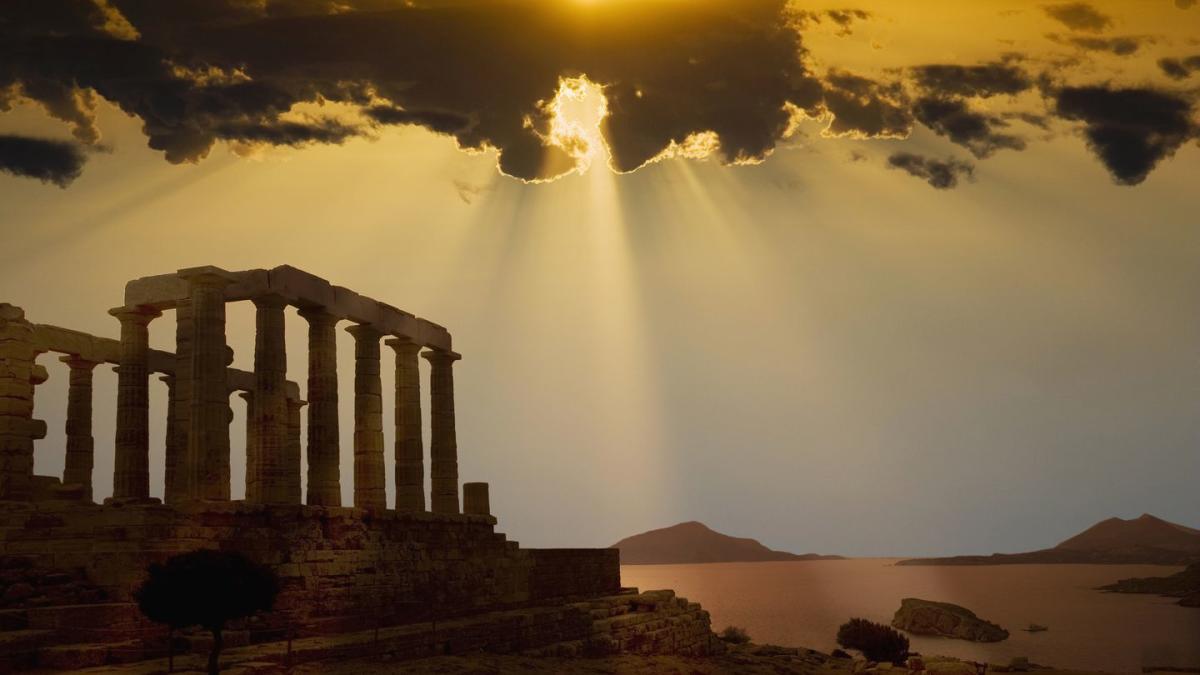
“Hearst Magazines and Yahoo may earn commission or revenue on some items through these links.”
-
Archeologists uncovered a heroon—a funerary monument to an Ancient Greek hero—near the modern Greek city of Aigio in the Peloponnese.
-
Located in the ancient city of Rypes (initially settled by the Pelasgians, a pre-Greek civilization), the area eventually came under control of the Ionians until the Romans abandoned it in the 1st century B.C.
-
Among the objects found at the site were a large collection of gold jewelry and marble statues carved from Pentelic marble—the same marble used to build the Parthenon in Athens.
The Ancient Greeks were some of the most remarkable metalworkers of antiquity. Not only did they create bronze devices that surpassed the complexity of similar creations more than two millennia into the future, they were also some of the finest jewelry-makers in world history. Now, archaeologists have uncovered a heroon—a funerary monument to an Ancient Greek hero—that now serves as a memorial not only to the honored dead, but to the culture’s incredible craftsmanship.
Excavations on the Trapezá plateau in the Peloponnese, which began in October, have already unearthed an incredible find near the Greek city of Aigio. Scholars believe that in antiquity, this area was known as the city of Rypes, as referred to by the ancient geographer Pausanias. It’s believed that the area was originally settled by the Pelasgians, who actually predate the Greeks and are believed to be one of the first peoples to populate the Aegean region.
Advertisement
Advertisement
Then, history took its course—eventually, Hellenistic tribes (specifically, the Ionians) settled in the region before Romans conquered the area and abandoned the city around 30 B.C. Thankfully, some incredible artifacts were left behind and remained untouched for thousands of years.
This particular excavation campaign focused on Building Γ (Gamma), located southeast of the temple terrace, according to Arkeonews. The excavation team uncovered a 16.8-meter-long crepidoma—the large step foundation of most Greek temples—that dates to around 300 B.C., and the architectural features point to a building constructed in the Corinthian style (along with elaborate depictions of Apollo).
However, it was the discovery of large funerary stelae (slabs) depicting a young male figure that led experts to believe that Building Γ was in fact a heroon—a monument to an unknown Greek hero. And, as is typical of funerary monuments throughout the ancient world, the excavation also turned up some serious golden swag. Archaeologists found gold rings, necklaces, a pendant depicting the winged god Eros, gold earrings adorned with lion heads, and a large cache of funerary coins.
Finally, they discovered lion statues made from Pentelic marble, which was gathered from Mount Pentelikon in Attica, Greece in ancient times. This is the same marble that forms the Parthenon in Athens—the epicenter of the Ancient Greek world.
Advertisement
Advertisement
The nation of Greece is one of the most archaeologically rich countries in the world. For evidence, look no further than the summer of this year, when archeologists discovered a 4,000-year-old building on a Cretan hilltop where officials had hoped to build a new airport. There’s still clearly much to be discovered.
You Might Also Like
EMEA Tribune is not involved in this news article, it is taken from our partners and or from the News Agencies. Copyright and Credit go to the News Agencies, email news@emeatribune.com Follow our WhatsApp verified Channel




